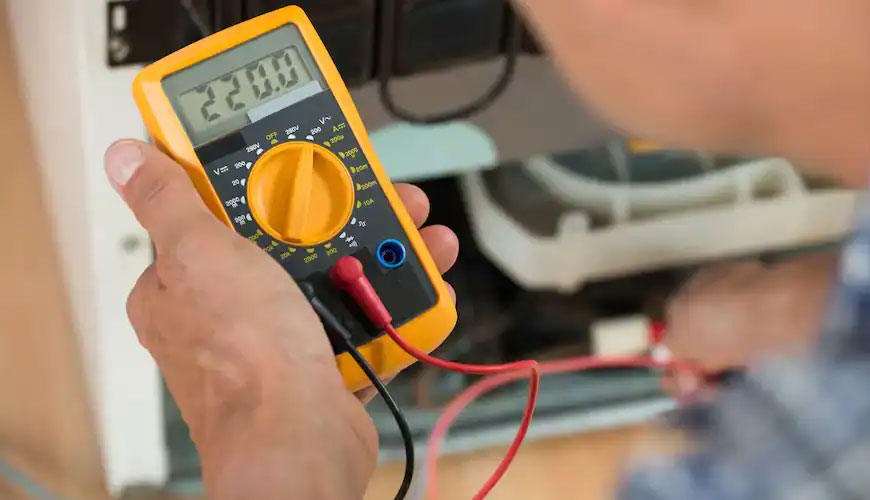

EUROLAB, with its state-of-the-art accredited laboratories and expert team, provides precise and fast testing services within the scope of DIN 53482 testing. As part of testing on materials for electrical purposes, the process of measuring the electrical resistance of non-metallic materials is very important. Electrical resistance is the resistance of a material to electric current and its unit is Ohm (Ω). This test is done to determine the electrical conductivity and usability of the material.

The basic devices for measuring electrical resistance are a multimeter or ohmmeter. These devices precisely measure the resistance of the material that passes the electric current. For the test to give accurate results, the following steps should be considered:
Pre-Test Preparation: It should be noted that there is no pollution, oil or insulation material on the material. The material, if any, should be cleaned.
Correct Adjustment of the Device: The correct measuring range of the multimeter or ohmmeter used must be selected. The measuring range should be selected according to the expected resistance of the material to be tested.
Material Connection: The material to be tested must be connected between the two ends of the device. During this process, good contact should be ensured and care should be taken not to damage the cables.
Geometry of Material: The geometry of the material being tested can also have an effect on the resistance. It is important to note that different sizes and shapes may alter the results, especially with low conductivity materials.
Providing Stability: Measurements should be repeated several times for results to be consistent and results should be evaluated by averaging.
Test Current: Depending on the properties of the material, the test current may need to be adjusted to the appropriate level. High current can cause damage to the material, so the correct test current should be selected.
Things to pay attention: Some materials, especially those with high resistance, can affect measurement results due to electrostatic discharges or humid environments. Such situations should be taken into account and, if necessary, additional measures should be taken.
EUROLAB assists manufacturers with DIN 53482 test compliance. Our test experts, with their professional working mission and principles, provide you, our manufacturers and suppliers, the best service and controlled testing process in our laboratories. Thanks to these services, businesses receive more effective, high-performance and quality testing services and provide safe, fast and uninterrupted service to their customers.
To get an appointment, to get more detailed information or to request an evaluation, you can ask us to fill in our form and reach you.